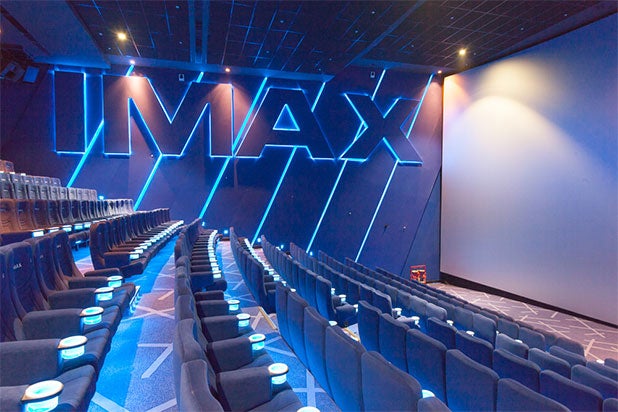Imax Will 'Benefit' From Shorter Theatrical Windows, CEO Says
“Studios and talent are going to be more focused on how to create an event around their movie,” Richard Gelfond says
Wikimedia
Imax CEO Richard Gelfond on Thursday said his large-format theater company stands to “benefit” as Hollywood studios abandon the traditional 90-day windows between movies hitting theaters and heading to consumers on demand.
“Imax is going to benefit from that, and the reason is, more of the value proposition is going to go to the backend of the release,” Gelfond said during Imax’s investor call on Thursday. “As windows get shorter, studios and talent are going to be more focused on how to create an event around their movie and how to make their movie stands out. We started to see some of that already– as windows have moved around, a lot of talent and directors have been in touch and asked how we can do more Imax with our movies.”
Since Imax releases tend to be focused more on bigger-budget tentpole films — and include a premium charge for ticket buyers — both the company and studios stand to gain from a heightened theatrical experience. “If you are company who owns a streamer and studio, you want to find a way to find the biggest profit for that property,” he said. “There have been studies shown that when people see a movie in Imax, they like it better.”
Indeed, we’ve already seen those moves. Over the weekend, Zack Snyder teased a black-and-white version of his “Justice League” cut called “Justice Is Gray” that will be on HBO Max, but did not announce any further details. He also revealed that he shot in the 1.43:1 ratio in hopes that the movie will be released in Imax theaters once conditions permit. “To me the ultimate version is the black and white Imax version,” he said.
Several major studios have made significant moves to curtail the window of in-theater exclusivity in recent months, though the length of that window has varied based on the studio.
Universal forged an agreement with AMC Theatres and Cinemark to release films on PVOD as early as 17 days after theatrical release, or 31 days if the film earns a domestic opening of over $50 million. Warner Bros. went further, announcing that all of its 2021 films would be released simultaneously in theaters and on HBO Max — a move staunchly opposed by major theater chains. Disney is taking multiple approaches, including opening this Friday’s “Raya and the Last Dragon” in theaters and premium VOD simultaneously while opening others in theaters first. And last week, Paramount announced that it would place “Mission: Impossible 7” and “A Quiet Place: Part II” on its new Paramount+ service 45 days after theatrical release.
Gelfond wasn’t opposed to shorter windows and even suggested streamers might come in to provide more content for theaters as films cycle to streaming services faster.
“I know Apple has made some noise honoring theatrical,” he said on the call. “If windows shorten, I wouldn’t be surprised if there is content coming in from the streaming companies to make up for that [shorter window].”
Cinema chains have fought to preserve 90 days of exclusivity for decades, but most exhibitors are not in any position to push back as the pandemic has kept most theaters shuttered for the last year. Just five years ago, Napster creator Sean Parker roiled Hollywood with his proposed company Screening Room, which would offer films to stream at home for $50 the same day they were released in theaters. The idea was heavily criticized by theater owners and other entertainment execs at CinemaCon within days of its announcement, and studios backed away from the project.
Our new “normal” has shifted Gelfond’s perspective just because there might finally be some “certainty” around what the future of the industry will look like. “Certainty around windowing is a good thing — the uncertainty of windowing has been a cloud over the exhibition business for a long time and I think certainty is going to be beneficial,” he said.
Jeremy Fuster contributed to this report.
Source: Read Full Article
